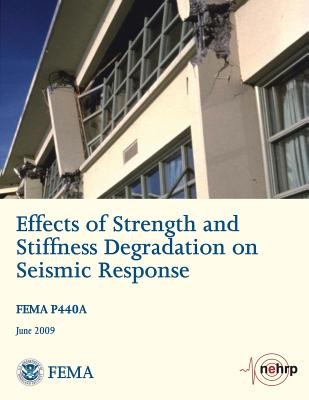
- We will send in 10–14 business days.
- Author: Federal Emergency Management Agency
- Publisher: CreateSpace Independent Publishing Platform
- Year: 2013
- Pages: 312
- ISBN-10: 1484018796
- ISBN-13: 9781484018798
- Format: 21.6 x 28 x 1.7 cm, softcover
- Language: English
- SAVE -10% with code: EXTRA
Effects of Strength and Stiffness Degradation on Seismic Response (FEMA P440A / June 2009) (e-book) (used book) | bookbook.eu
Reviews
Description
One of the primary goals of the Federal Emergency Management Agency (FEMA) and the National Earthquake Hazards Reduction Program (NEHRP) is to encourage design and construction practices that address the earthquake hazard and minimize the potential damage resulting from that hazard. This document, Effects of Strength and Stiffness on Degradation on Seismic Response (FEMA P440A), is a follow-on publication to Improvement of Nonlinear Static Seismic Analysis Procedures (FEMA 440). It builds on another FEMA publication addressing the seismic retrofit of existing buildings, the Prestandard and Commentary for Seismic Rehabilitation of Buildings (FEMA 356) and the subsequent publication, ASCE/SEI Standard 41-06 Seismic Rehabilitation of Existing Buildings (ASCE 41). The goal of FEMA 440 was improvement of nonlinear static analysis procedures, as depicted in FEMA 356 and ASCE 41, and development of guidance on when and how such procedures should be used. It was a resource guide for capturing the current state of the art in improved understanding of nonlinear static procedures, and for generating future improvements to those products. One of the recommendations to come out of that work was to fund additional studies of cyclic and in-cycle strength and stiffness degradation, and their impact on response and response stability. This publication provides information that will improve nonlinear analysis for cyclic response, considering cyclic and in-cycle degradation of strength and stiffness. Recent work has demonstrated that it is important to be able to differentiate between cyclic and in-cycle degradation in order to more accurately model degrading behavior, while current practice only recognizes cyclic degradation, or does not distinguish between the two. The material contained within this publication is expected to improve nonlinear modeling of structural systems, and ultimately make the seismic retrofit of existing hazardous buildings more cost-effective.
EXTRA 10 % discount with code: EXTRA
The promotion ends in 19d.11:36:32
The discount code is valid when purchasing from 10 €. Discounts do not stack.
- Author: Federal Emergency Management Agency
- Publisher: CreateSpace Independent Publishing Platform
- Year: 2013
- Pages: 312
- ISBN-10: 1484018796
- ISBN-13: 9781484018798
- Format: 21.6 x 28 x 1.7 cm, softcover
- Language: English English
One of the primary goals of the Federal Emergency Management Agency (FEMA) and the National Earthquake Hazards Reduction Program (NEHRP) is to encourage design and construction practices that address the earthquake hazard and minimize the potential damage resulting from that hazard. This document, Effects of Strength and Stiffness on Degradation on Seismic Response (FEMA P440A), is a follow-on publication to Improvement of Nonlinear Static Seismic Analysis Procedures (FEMA 440). It builds on another FEMA publication addressing the seismic retrofit of existing buildings, the Prestandard and Commentary for Seismic Rehabilitation of Buildings (FEMA 356) and the subsequent publication, ASCE/SEI Standard 41-06 Seismic Rehabilitation of Existing Buildings (ASCE 41). The goal of FEMA 440 was improvement of nonlinear static analysis procedures, as depicted in FEMA 356 and ASCE 41, and development of guidance on when and how such procedures should be used. It was a resource guide for capturing the current state of the art in improved understanding of nonlinear static procedures, and for generating future improvements to those products. One of the recommendations to come out of that work was to fund additional studies of cyclic and in-cycle strength and stiffness degradation, and their impact on response and response stability. This publication provides information that will improve nonlinear analysis for cyclic response, considering cyclic and in-cycle degradation of strength and stiffness. Recent work has demonstrated that it is important to be able to differentiate between cyclic and in-cycle degradation in order to more accurately model degrading behavior, while current practice only recognizes cyclic degradation, or does not distinguish between the two. The material contained within this publication is expected to improve nonlinear modeling of structural systems, and ultimately make the seismic retrofit of existing hazardous buildings more cost-effective.


Reviews